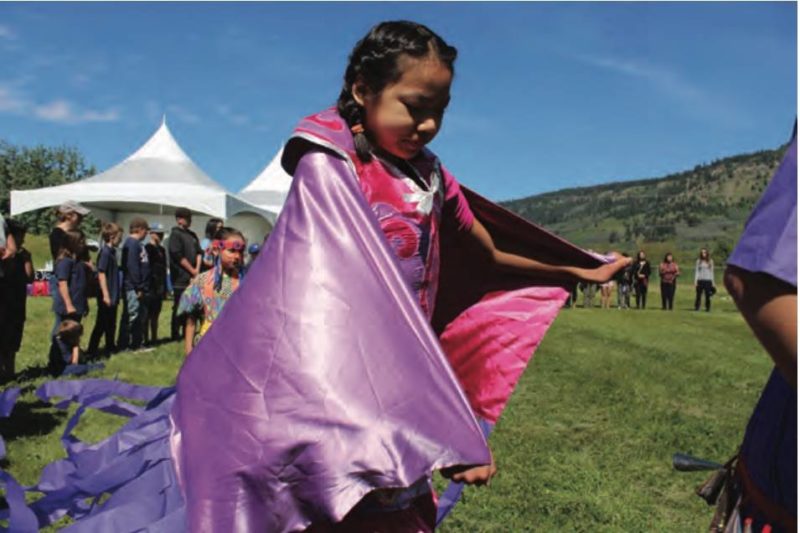The South Cariboo has a long and cultured history and takes its name from the once-abundant caribou herds. First Nations have called the area home for thousands of years.
The entire area falls within unceded Secwepemc territory, bordered by Tsilhqot’in territory to the west and north. Nearest to 100 Mile House is Tsq’escenemc or Canim Lake Band.
Other nearby Secwepemc First Nations include Stswecem’c Xgat’tem (Canoe Creek/Dog Creek), Pellt’iq’t (Whispering Pines/Clinton), Llenlleney’ten (High Bar), Bonaparte Indian Band and Esk’etemc (Alkali Lake).
South Cariboo First Nations were known to be seasonal, living in tipis and lean-tos during more moderate summers and using underground kekuli villages during the winter. Some sites contain the remains of more than 100 kekuli, indicating a large potential population.
A reconstruction of a kekuli can be seen by the public near the Lillooet Tribal Council’s offices near the reserve community of T’t’ikt in Lillooet, BC.
Annual events include National Indigenous Peoples Day and a Pow-wow. Many local First Nations’ cultural traditions have seen a resurgence in recent years with activities such as drum making, beading, games, ethnobotany, dream catcher making, crafts, baby cradles and cedar baskets seeing a growth in popularity, as well as hunting, fishing and trapping.
Foods such as bannock and pemmican can still be enjoyed, as well as games such as Lahal. The Pow-wow is usually accompanied by traditional drumming and dancing by band members sharing fancy shawl, traditional and jingle regalia.
For more visit 100 Mile Free Press or the South Cariboo Visitor Centre.











 Get out on horseback in the South Cariboo
Get out on horseback in the South Cariboo